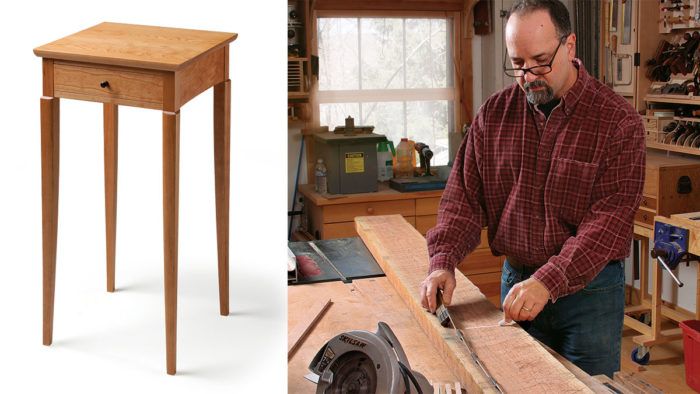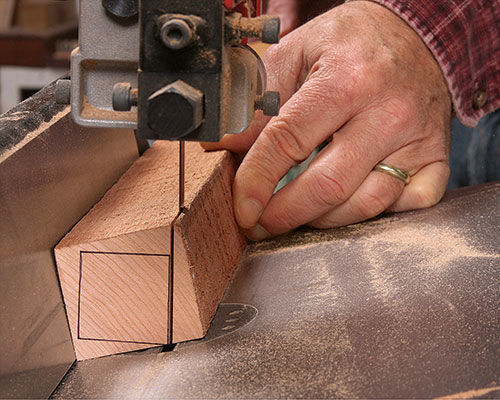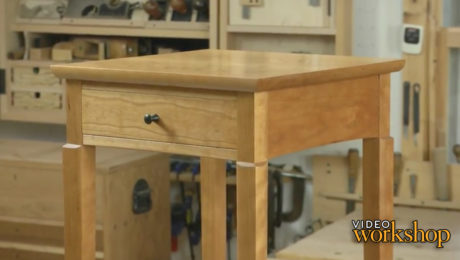Make a Table from a Board
Stylish side table is a great lesson in getting the most out of your lumber.

Synopsis: There’s more to making a beautiful piece of furniture than choosing a good design. As much effort needs to go into choosing the right wood, and using it successfully. This table project is a primer for these skills. All the parts come from a single board. This not only ensures economy, but also guarantees you’ll have a good color match throughout the piece. And by cutting parts from strategic locations in the board, you’ll end up with the pleasing grain patterns in all the right places. Along the way, you’ll get great lessons in resawing and rough-milling stock. Also included: a contemporary transformation of the classic cabriole leg.
You put a lot of effort into building a project—from creating gap-free joints to meticulously prepping surfaces and spending hours finishing. But all that work is compromised if the piece ends up with mismatched boards and chaotic grain. To avoid these hazards, you need to put as much effort into choosing and milling your lumber as you do into designing the piece. The two go hand in hand.

This small table is a simple project that lets you focus on using wood successfully and efficiently. All of the parts can be had from a single board. The focus, though, is not just on economy. By getting all of the parts from one board, you’ll ensure a great color match throughout the piece. And by cutting parts from strategic locations in the board, you’ll end up with the pleasing grain patterns in all the right places. Along the way, you’ll get great lessons in resawing and rough-milling stock. These concepts will work with any piece you make, from chests of drawers to cabinets.
Pick The Right Board
For this table, you’ll need a flatsawn board that’s 2 in. thick by 8 in. wide by 8 ft. long. This will yield more than enough stock, giving you the flexibility to work around knots or defects. The thickness is necessary to get the stock for the legs without having to glue up thinner boards. It also gives you plenty of material to resaw boards for the tabletop and aprons.
Find a board that’s as clear as possible with little to no sapwood. You’ll see the importance of this later as you break down the board. The grain also should be as straight as possible along its length. The longest part in the table is only 26 in., so a little bow along the length is not a problem.
Download the plans for this table from the Digital Plans Library. Plus, browse 100+ other plans available for members only.
For the full article, download the PDF below:
 |
Fine Woodworking Recommended Products

AnchorSeal Log and Lumber End-Grain Sealer

DeWalt 735X Planer

Ridgid R4331 Planer








Log in or create an account to post a comment.
Sign up Log in